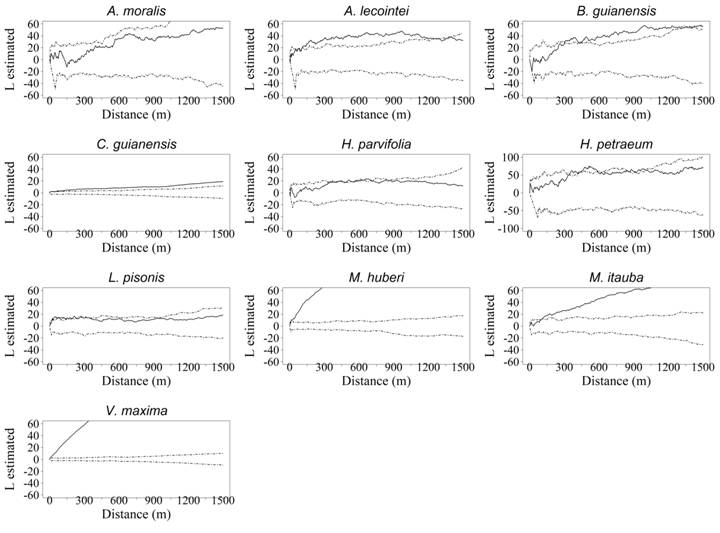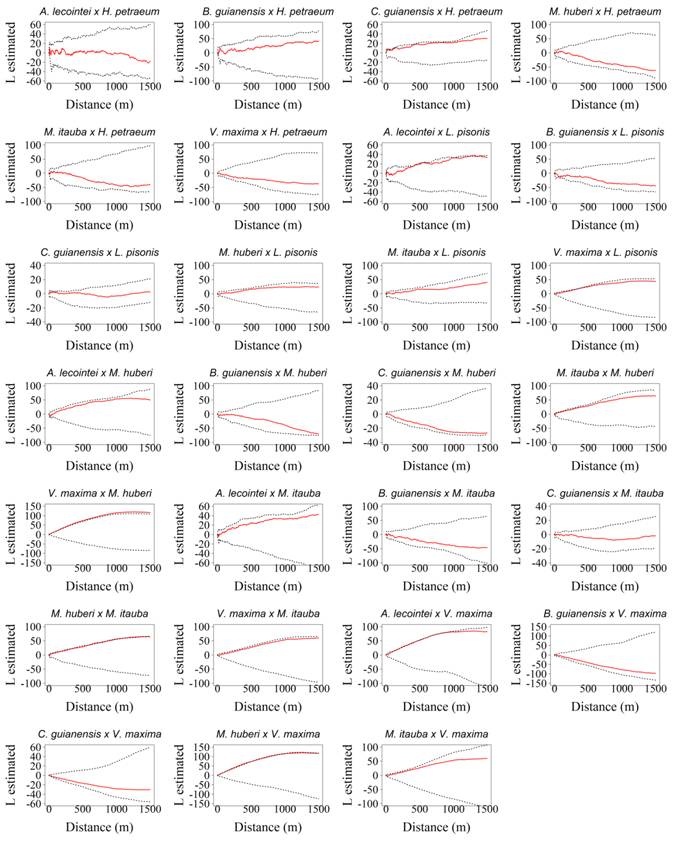ABSTRACT:
This study was conducted to establish the pattern and the spatial associations of the Amazon commercial tree groups. In a region extending across 2,000 ha in the Tapajós National Forest (FNT), Pará, a forest census was conducted. The census included commercial trees of perimeter at breast height (PBH), equal to or greater than 158 cm and the Cartesian coordinates of their bearings. Using Ripley’s K function, the spatial pattern was discerned, with 5 m radius being assumed, and maximum distances varying up to 1,500 m. Then, with 99.8% probability for both, 500 Monte Carlo simulations were performed for the univariate K function, and 500 toroidal simulations were done for the bivariate function.The commercial tree groups, which revealed an aggregated spatial pattern in a minimum of approximately 50% of the analysis distance were namely, Astronium lecointei, Bagassa guianensis, Couratari guianensis, Manilkara huberi, Mezilaurus itauba, and Vochysia maxima. In Brazil, the commercial tree groups, based on the commercialization criteria for tropical trees show random and aggregated spatial patterns with associations of spatial independence.
Key words:
Ripley’s K; Amazon; spatialization of forest species

 Thumbnail
Thumbnail
 Thumbnail
Thumbnail
 Thumbnail
Thumbnail
 Thumbnail
Thumbnail
 Thumbnail
Thumbnail




